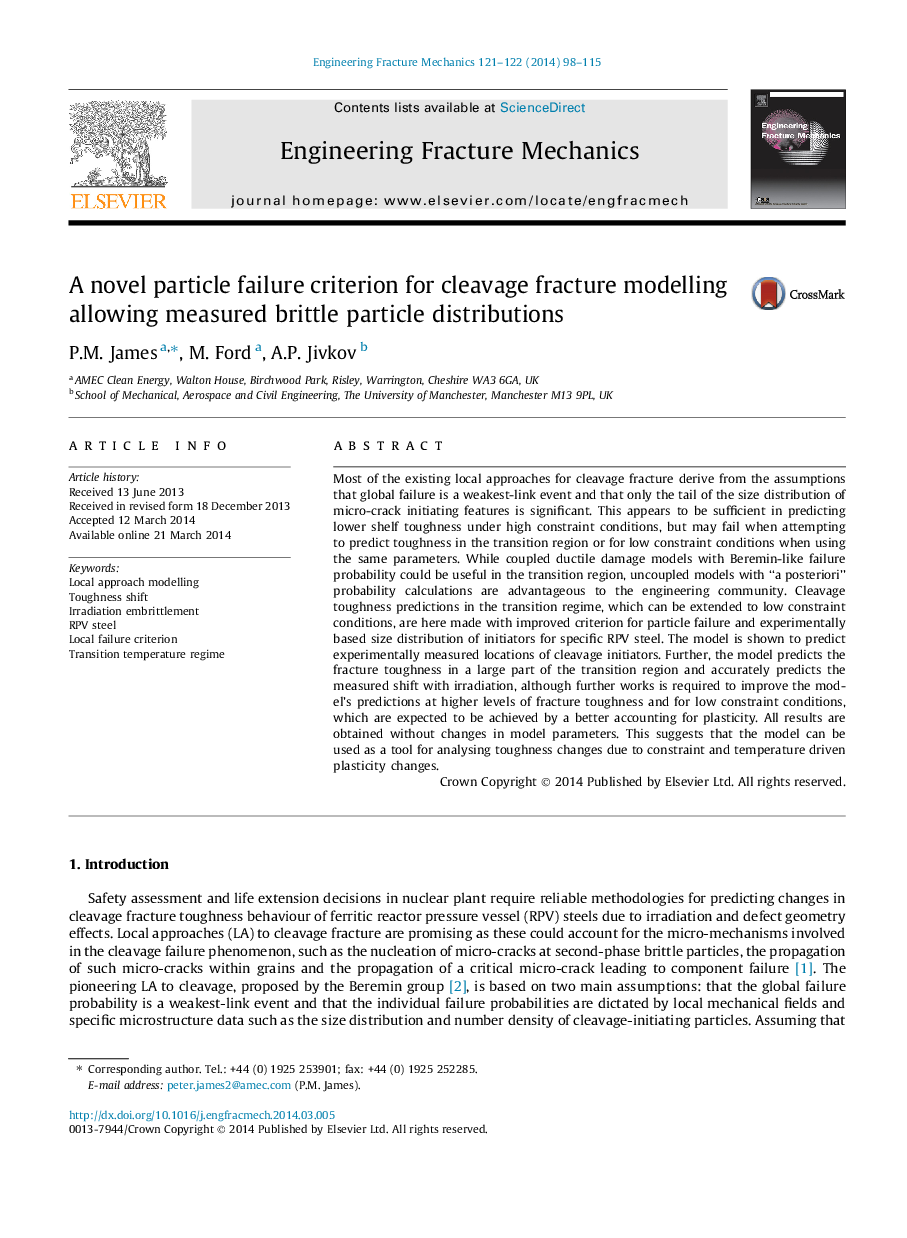| کد مقاله | کد نشریه | سال انتشار | مقاله انگلیسی | نسخه تمام متن |
|---|---|---|---|---|
| 770304 | 1463105 | 2014 | 18 صفحه PDF | دانلود رایگان |
• Ductile to brittle toughness predictions compared to experimental results.
• Improved criterion for particle failure including measured particle distributions.
• Predict experimentally measured locations of cleavage initiators.
• Predicts toughness in transition region and shift with irradiation.
• All results are obtained without changes in model parameters.
Most of the existing local approaches for cleavage fracture derive from the assumptions that global failure is a weakest-link event and that only the tail of the size distribution of micro-crack initiating features is significant. This appears to be sufficient in predicting lower shelf toughness under high constraint conditions, but may fail when attempting to predict toughness in the transition region or for low constraint conditions when using the same parameters. While coupled ductile damage models with Beremin-like failure probability could be useful in the transition region, uncoupled models with “a posteriori” probability calculations are advantageous to the engineering community. Cleavage toughness predictions in the transition regime, which can be extended to low constraint conditions, are here made with improved criterion for particle failure and experimentally based size distribution of initiators for specific RPV steel. The model is shown to predict experimentally measured locations of cleavage initiators. Further, the model predicts the fracture toughness in a large part of the transition region and accurately predicts the measured shift with irradiation, although further works is required to improve the model’s predictions at higher levels of fracture toughness and for low constraint conditions, which are expected to be achieved by a better accounting for plasticity. All results are obtained without changes in model parameters. This suggests that the model can be used as a tool for analysing toughness changes due to constraint and temperature driven plasticity changes.
Journal: Engineering Fracture Mechanics - Volumes 121–122, May 2014, Pages 98–115
